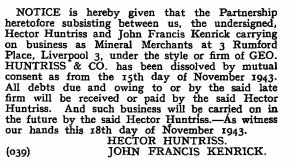
TALC MINING
George Huntriss was born in Liverpool in 1851. In both the 1881 and 1901 censuses he was described as a general merchant - a description that provides no hint as to the nature of his business.

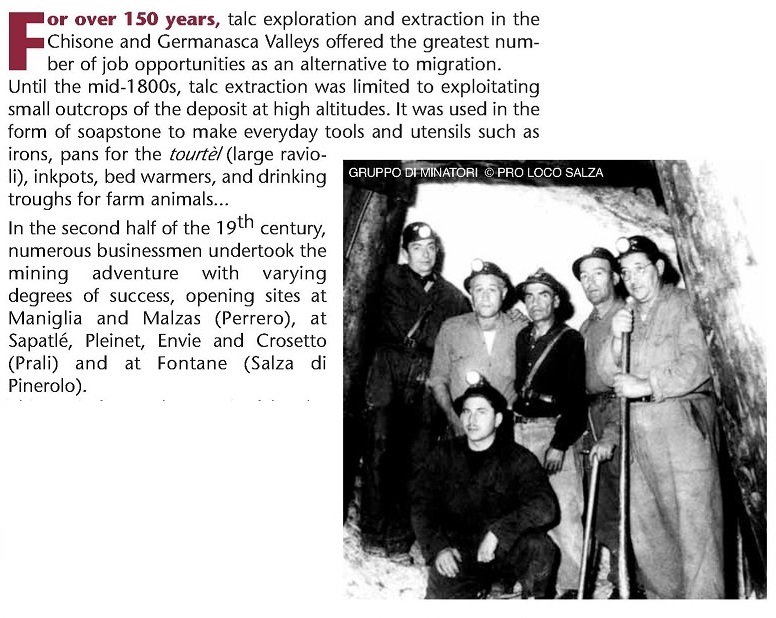
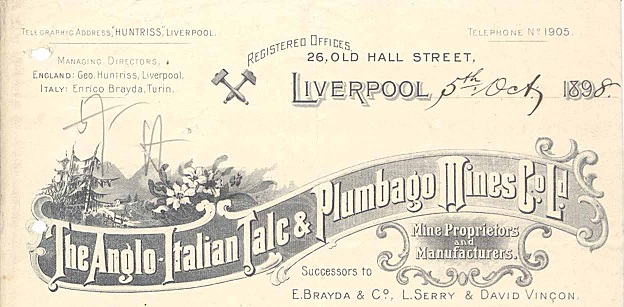
Towards the end of the 19th century, it became apparent that more investment was needed to develop mining in the area. The Italians had the mining expertise, but did not have finance, and so turned to a group of Liverpool entrepreneurs, and in 1897 formed the Anglo-Italian Talc and Plumbago Mines Co Ltd, which took over the mines and mining rights previously held by Enrico Brayda. The intial shareholders and directors of the company were:
| George Curzon Dobell | Merchant, Liverpool | Director and shareholder |
| George Huntriss | Merchant, Liverpool | Director and Shareholder |
| James Hentry Bowman | Merchant, Liverpool | Director and shareholder |
| Enrico Brayda | Mine proprietor, Turin | Director |
| Maximillian San Martino | Mine proprietor, Turin | Director |
| Francis Norman | Master mariner, Seaforth | Shareholder |
| Charles Webster | Merchant, Liverpool | Shareholder |
| James Smith | Merchant, Rock Ferry | Shareholder |
Enrico Brayda and Maximillian San Martino were appointed to the Local Board, responsible for managing the Company's affairs in Italy. Enrico Brayda was nominated as manager.
An article (in Italian!) in La Stampa includes the following:
"In Val Germanasca, passing through the villages of Pleinet, Sapatelle Malzas, it is possible to understand the difficult conditions of life of the miners, in winter completely isolated in their homes. The mines of Malzas are among the oldest in the area; still visible are the ruins of a building next to Huntriss gallery."
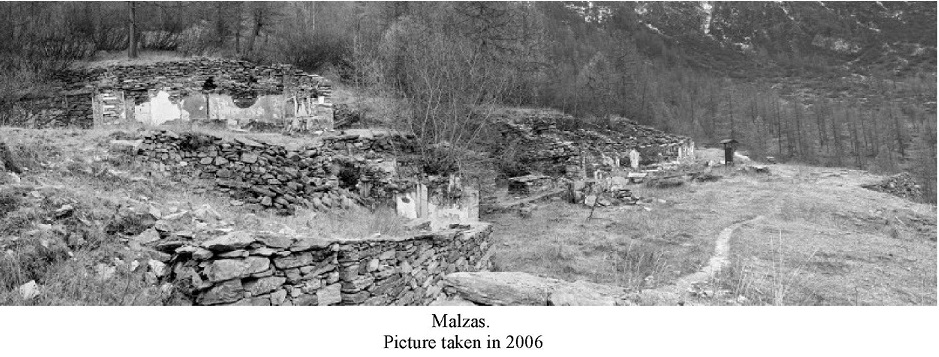
This picture, and the article that follows, are taken from www.pralymania.com and used by kind permission of Massimo Martelli
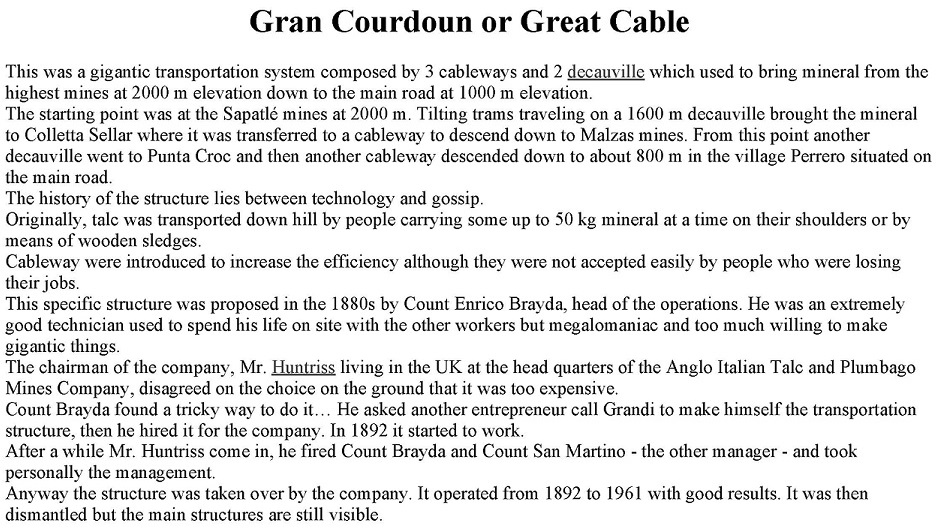
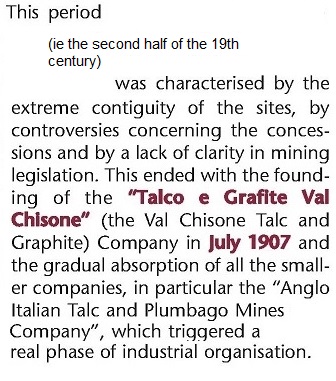
In 1907,the Anglo Italian Talc and Plumbago Mines Company Ltd was wound up ......
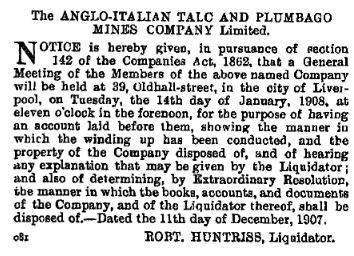
The closure of the company has to be seen against the background of the political situation of the time. 1907 saw the signing by England, France and Russia of the Triple Entente, opposing the Triple alliance of Germany, Austria and Italy. The Anglo-Italian name was no longer politically acceptable, and so the business was transferred to an Italian company, "Talco e Grafite Val Chisone", which operated in the Pinerolo area. The main shareholder was Pietro Villa. The company manager was Pietro Sartorio, who oversaw the transfer of the operations of Anglo-Italian to the new company. family. Both George and Hector (George’s son) continued to be involved, and remained close friends with the Sartorio family.
The onset of the first world war did not bring an end to trade (Nowunder the name of Geo Huntriss and Company - although it was not without its problems. . .
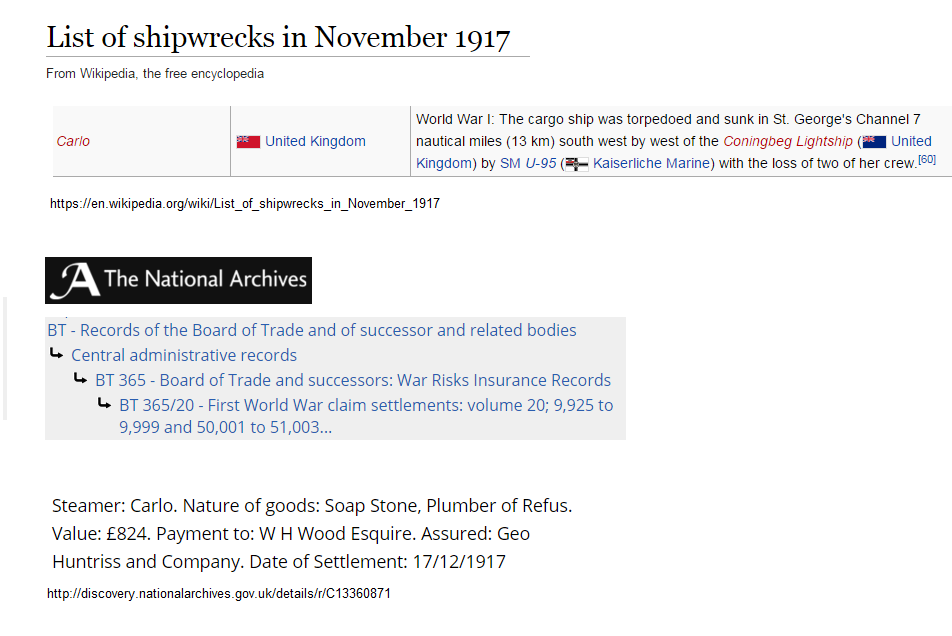
George's son Hector fought in the first World War - George maintained this diary containing cuttings from the local press that related to the regiment in which Hector served.
In the latter part of the war, Hector (or Ettore, as he was known when in Italy) was stationed in CastelFranco, but this did not seem to stop his business activities, nor his contact with the Sartori family. He was fluent in Italian, as shown by this letter to Signore Sartori in 1918.
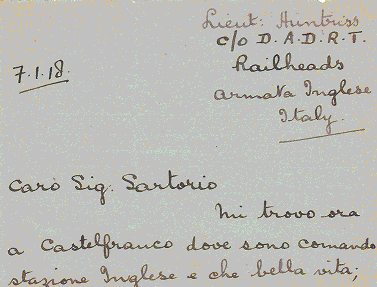
Click on the image to see the full letter and translation.
Hector eventually took over his father's business, supplying cosmetic talc to companies such as Elizabeth Arden.
